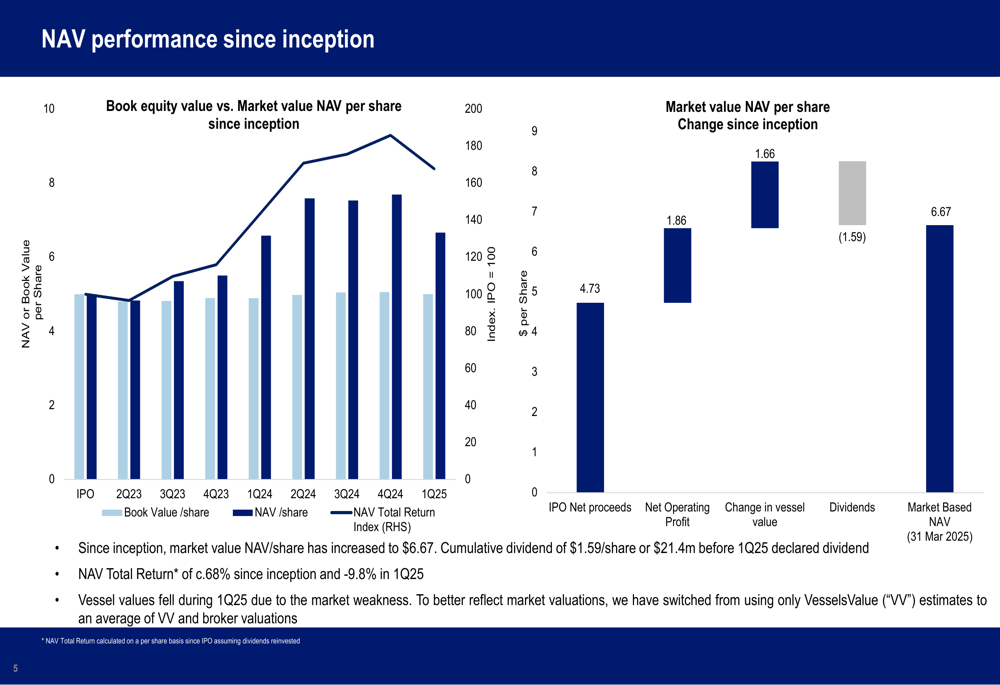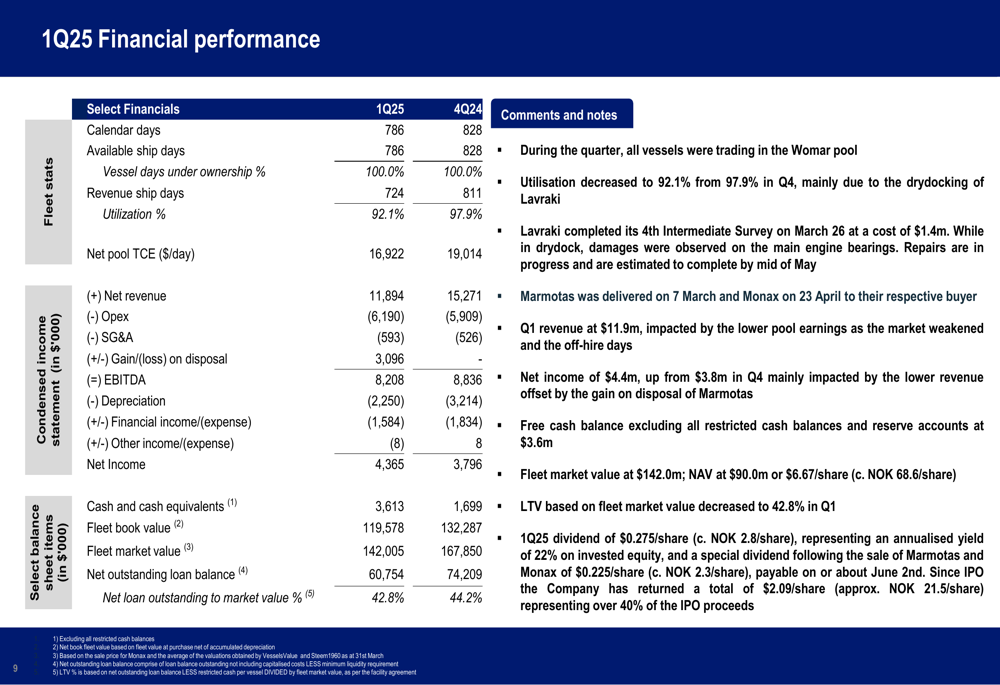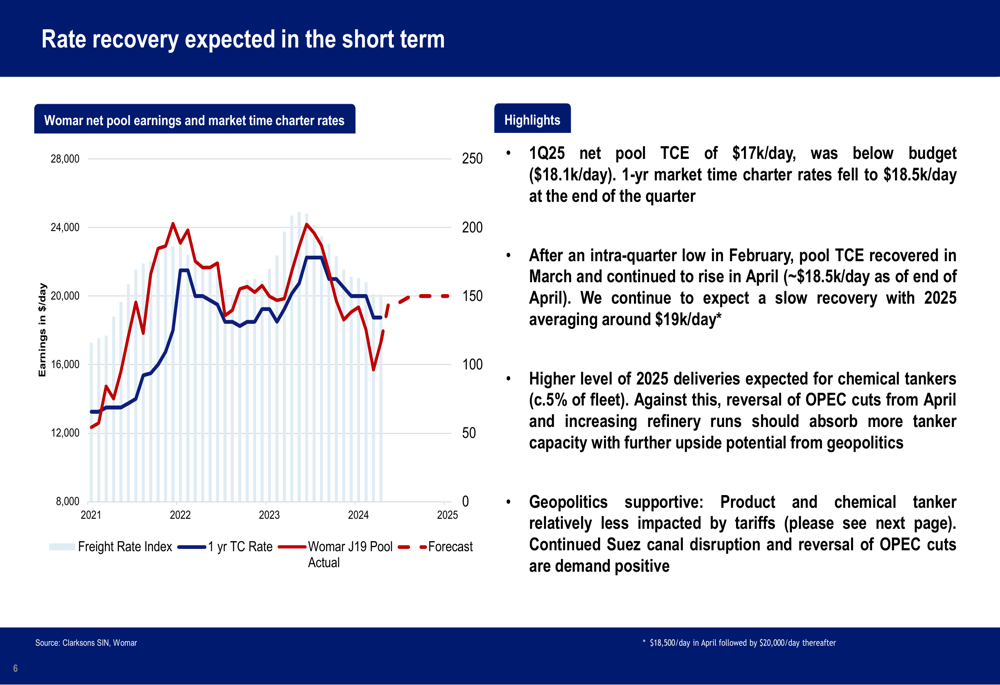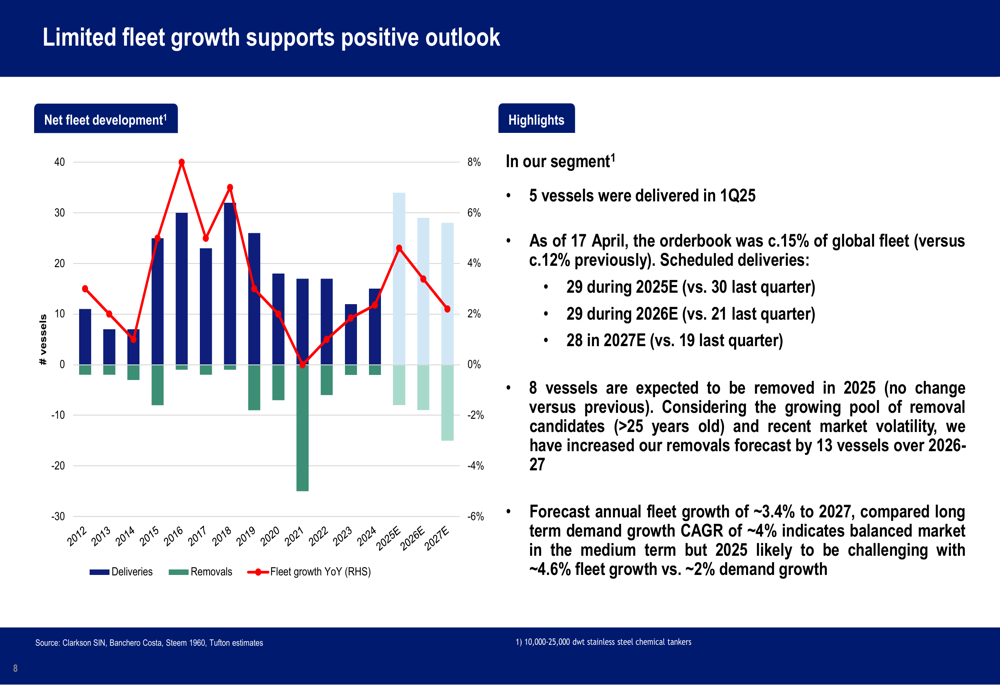U.S. may expand Nvidia and AMD’s 15% China chips deal to other companies
Introduction & Market Context
Stainless Tankers ASA (OB:STST) presented its first quarter 2025 results on May 8, revealing a challenging period for the chemical tanker market. The company reported a decline in Net Asset Value (NAV) after several quarters of growth, though management expressed cautious optimism about a recovery in rates through the remainder of the year.
The chemical tanker operator’s share price closed at NOK 57.60 on May 7, up 2.49% ahead of the results announcement. The stock has traded between NOK 46 and NOK 69 over the past 52 weeks.
Quarterly Performance Highlights
Stainless Tankers reported EBITDA of $8.2 million and net income of $4.4 million on net revenue of $11.9 million for Q1 2025. These results were impacted by weaker-than-expected pool Time Charter Equivalent (TCE) rates, which averaged $17,000 per day during the quarter compared to a budgeted $18,100 per day.
Despite the challenging market conditions, the company declared a regular quarterly dividend of $0.275 per share (approximately NOK 2.8 per share) and an additional special dividend of $0.225 per share (approximately NOK 2.3 per share) following the sale of two vessels. The combined dividend represents an annualized yield of 22% on invested equity.
As shown in the following chart of NAV performance since inception, the company’s market-based NAV per share declined to $6.67 in Q1 2025 from $7.39 in Q4 2024, representing a quarterly NAV Total (EPA:TTEF) Return of -9.8%:

Since its IPO, Stainless Tankers has returned a total of $2.09 per share to investors (approximately NOK 21.5 per share), representing over 40% of the IPO proceeds. The company noted that its dividend distributions are made in the form of return of paid-in capital.
Detailed Financial Analysis
The company’s financial performance in Q1 2025 reflects both operational challenges and strategic decisions. Vessel utilization decreased to 92.1% from 97.9% in the previous quarter, primarily due to the drydocking of the vessel Lavraki.
The following financial summary highlights key metrics from the quarter:

Stainless Tankers completed the sale of two vessels during the reporting period, with Marmotas delivered to its buyer on March 7 and Monax on April 23. These disposals generated a gain of $3.1 million and contributed significantly to the company’s cash position, which stood at $3.6 million at quarter-end.
The company’s balance sheet remains solid with a loan-to-value ratio of 42.8%, based on a fleet market value of $142 million against net outstanding loans of $60.8 million. This represents an improvement from previous quarters, providing financial flexibility in the current market environment.
Forward-Looking Statements
Stainless Tankers expects a gradual recovery in chemical tanker rates throughout 2025, with pool TCE rates already showing improvement in March and April (reaching approximately $18,500 per day by the end of April). Management forecasts average rates of around $19,000 per day for the full year 2025.
The company provided the following outlook for rate recovery in the chemical tanker market:

The medium-term supply-demand balance appears favorable, with annual fleet growth projected at approximately 3.4% through 2027, compared to trend demand growth of around 4%. However, 2025 specifically is expected to be challenging with fleet growth of 4.6% outpacing demand growth of about 2%.
As illustrated in the following fleet development chart, the orderbook has increased to approximately 15% of the global fleet (up from 12% previously):

Geopolitical factors continue to influence the market, with ongoing disruptions in the Suez Canal potentially providing some support for rates. The company noted that chemical tankers are likely to see little to no direct impact from tariff increases between the U.S. and China.
Despite the near-term challenges, Stainless Tankers remains "cautiously optimistic" for the remainder of 2025, citing a balanced market outlook in the medium term and potential upside from geopolitical developments and the reversal of OPEC production cuts.
Full presentation:
This article was generated with the support of AI and reviewed by an editor. For more information see our T&C.
